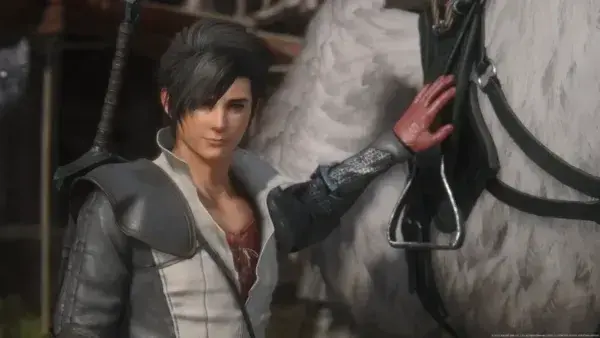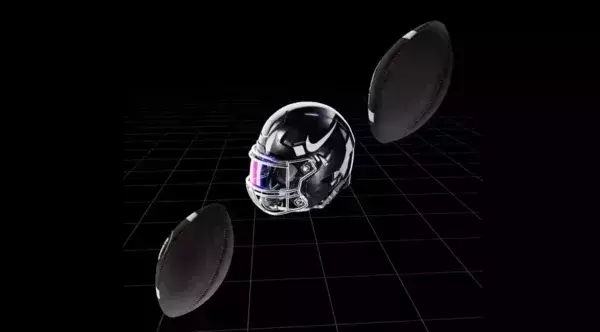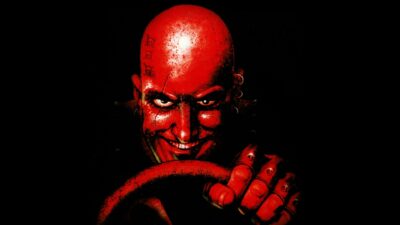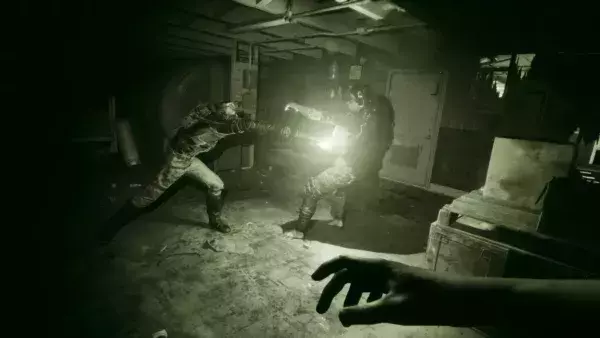
Ahead of Super Mario Wonder’s launch, we look back at half a dozen of the most obscure Mario games ever released.
With its eye-catching new elephant form and the psychedelic, reality-warping effects of its Wonder Flowers, this month’s Super Mario Wonder is arguably shaping up to be the weirdest entry in Nintendo’s series yet. This isn’t bad going, given that the Super Mario franchise has had surrealism etched into it ever since the original arcade game came out way back in 1983.
Lest we forget, Marion and Luigi’s first ever outing, simply called Mario Bros (they weren’t super just yet) had the pair of plumbers running around a sewer and jumping on pipes to knock turtles on their backs.
The far better known Super Mario Bros (1985) dialled up the weirdness even further, with magic mushrooms boosting Mario’s size when collected, like an 8-bit Alice in Wonderland.
Then there are the Super Mario games that are not only weird, but also incredibly obscure – so obscure, some of them never made it out of Japan. One of them even involves using a sewing machine. Let’s take a look…
Mario’s Cement Factory (Game & Watch, 1983)
Mario is best known today as a plumber, but he also once enjoyed a serious financial interest in the building materials wholesale supply trade, having owned his own Game & Watch-based cement factory.
Unfortunately, Mario seems to have skimped on costs when it came to ensuring employees’ physical well-being, causing him to spend his days desperately hopping about on elevators between liquid cement containers, which he must continually empty out into waiting delivery trucks through funnels lest the substance fall onto one of the presumably non-unionised workers below, killing them stone dead.
One of the best Game & Watch titles, this just demonstrates why Britain’s pointless Health and Safety Executive should be abolished immediately – in the name of fun. In 2002, the game was remade for inclusion on the excellent Game Boy Advance compilation, Game & Watch Gallery Advance, but now set in the unit where Mario made all the cookies for his NES Yoshi’s Cookie puzzle-game, instead of a cement factory.
Once again demonstrating his unacceptably cavalier attitude towards business regulations, Mario appears to be using exactly the same industrial apparatus to mix both cement and cookie dough, potentially leading to broken teeth or choking hazards amongst unwary Mushroom Kingdom consumers.
All Night Nippon Super Mario Bros (Famicom Disk System, 1986)
The most bizarre title on this list, this is a crudely rejigged version of the Japanese Super Mario Bros 2 (The Lost Levels to us westerners), altered to tie in with the popular late-night national radio programme All Night Nippon.
Produced to celebrate 20 years of the show, the game was published not by Nintendo, but by Nippon Broadcasting System (NBS), the show’s producers, under a special licence. Only 3,040 copies were manufactured, 2,000 of which were given away to lucky lottery-winners who sent in a self-addressed envelope to the radio show. But, if you did win a cartridge, what would you get? Virtually the same game as the standard Lost Levels, but with various NBS radio DJs inserted into it in 8-bit form; instead of rescuing Toads at the end of each world’s castle, as usual, you were saving superstar DJs.
Worst of all was the fate of DJ ‘Sunplaza’ Nakano, who was miraculously transformed into a whole army of Goombas, presumably by Magikoopa; the usual such living mushroom enemies in the game are replaced by crude pixels of Sunplaza’s ambulatory head, with tiny feet attached. In the background, meanwhile, mushrooms are replaced by radio-mikes. Furthermore, the Starman/Super Star power-up has been transformed into a ‘Haranya’, a supposed magical artefact buried by NBS employees somewhere in Tokyo, which listeners were challenged to find and dig up.
According to the game’s PR material, Mario “is an avid All Night Nippon listener like you”, so he steps in to rescue his favourite NBS presenters from the malign clutches of Bowser. Within a British context, imagine if Super Mario Bros had been remade so that Mario was now trying to save 1970s-90s Radio One Roadshow stars like Mike Smith, Keith Chegwin and Chris Evans, all while battling Goombas shaped like the waddling, disembodied head of Noel Edmonds.
Actually, don’t imagine that at all – it sounds terrifying.
Super Mario Bros 3 (Nelsonic wristwatch, 1990)
Yes, yes, you probably have played Super Mario Bros 3 – but that was the all-time classic 1988 NES title. This, on the other hand, is a simplistic single-screen LCD platform game squeezed onto a cheap plastic digital wristwatch by US firm Nelsonic Industries in 1990.
As usual, Mario had to save Princess Peach from Bowser – albeit here renamed ‘The Koopa Dragon’. Repeatedly, Mario must navigate a tiny number of platforms, avoiding poison mushrooms before gaining a Super Leaf power-up to become Raccoon Mario, with the new ability to swat away said ‘shrooms with his tail. Ultimately, Mario reaches Bowser and must destroy his supporting platform with head-bashes to make him fall down and die, Donkey Kong-style. Rinse and repeat, ad infinitum – or at least until you reach 1,999 points, at which juncture the primitive Casio calculator-level technology can’t cope and the game just ends. It’s fine, for a basic wristwatch game.
Nelsonic actually made several such titles under licence from Nintendo – both Mario-related and otherwise – the most notable of which was perhaps Luigi’s Hammer Toss, significant as being the less celebrated green Mario Brother’s first solo outing. Here, Luigi had to shuffle from left to right deflecting mallets tossed by the Hammer Bros. It was a delight only available as a promotional Happy Meal toy from McDonald’s. Apple iWatches seem pathetic by comparison. Also, they don’t come with fries and milkshake.
Mario Teaches Typing (PC, 1992)
Released for MS-DOS PCs by Interplay under licence from Nintendo, this is an ‘edutainment’ title in which – yes – Mario teaches children typing. He does this by urging them to play through a small number of platform or swimming challenges, in which Mario’s bumping of coin-blocks, stomping of Koopas, or avoidance of falling Thwomps, is determined by how speedily and accurately you type a series of simple linguistic prompts scrolling across the top of the screen.
It isn’t a bad idea, but the implementation is terrible, at least graphically; if Interplay wanted to teach small children typing, some small children should likewise have taught Interplay how to draw. It looks as if the graphics were made on Mario Paint. Without the use of the packed-in mouse. Mario moves like a constipated cartoon burglar (just look at him creeping!), whilst the absolutely hideous design of the Blooper jellyfish in the underwater level has to be seen to be believed.
The best thing about the game is the music – because it’s stripped straight from Super Mario World, and was therefore composed by Nintendo, not Interplay. Admittedly, there is also a rap song hidden away on it, but we won’t talk about that. The most notable thing about the sound design, however, is that the CD-ROM version is the very first game to feature Charles Martinet as the voice of Mario; so, it does have at least some historical importance.
The game was actually ripped off from an earlier PC edutainment game, Mavis Beacon Teaches Typing!, whose creator, radio-host Les ‘Frasier’ Crane, was apparently annoyed by the imitation, particularly as it sold 800,000 copies, doing well enough to spawn a 1997 sequel. If Mario Teaches Typing ever gets a third instalment, it should surely be modelled not after Mavis Beacon, but Sega’s surprisingly wonderful Dreamcast shooter Typing of the Dead, in which players make zombies’ heads explode by speed-typing the correct words which spring up on-screen while they explore a haunted house.
A mash-up of these titles with forgotten SNES light gun affair Yoshi’s Safari could actually be pretty good if anyone ever had the sense to make it: hastily touch-typing the word ‘morwong’ to make a Cheep-Cheep burst would be amazing. Oh, and it would also be profoundly educational, too. Obviously.
Read more: The 5 weirdest Japan-only Nintendo Famicom games
Hotel Mario (CDi, 1994)
Have you ever played any of the old Bugs Bunny Crazy Castle games on the original Game Boy? If so, then go back and play them again instead, as they are far better than this notorious piece of nonsense. Hotel Mario is a single-screen platformer in which Mario has to make his way through various hotel lobbies owned by the Koopa Kids/Koopalings from Super Mario Bros 3/Super Mario World, closing every single open door on each level in order to beat it, all while using elevators to avoid being evicted from the premises by classic Mario enemies like Boos, Paragoombas and Dry Bones.
The basic idea is perfectly sound, and no doubt if Nintendo had made it, it would have been pretty good. Sadly, however, it was made by Dutch electronics company Philips for its doomed CDi device, and was rubbish. Gaining the Mario licence after agreeing to help develop CD-ROM technology for Nintendo’s aborted SNES-CD add-on, Philips’ idea was stymied by its coding inexperience combined with the truly abysmal design of its CDi controllers, which were shaped not like normal joypads, but TV remote controls. So were Nintendo’s later Wii-motes, of course, but unlike Philips’ amateurish efforts, those actually worked properly.
The incredible unresponsiveness of the controls, which are more suited for negating static DVD menus than an actual video game, combined with the comically dire cut-scenes (again, apparently drawn on Mario Paint without a mouse) make this less Hotel Mario, more Bates Motel. Oh, and one of the worlds is called ‘Seizures Palace’ and features Goombas dressed as Elvis Presley impersonators. This should tell you absolutely all you need to know: sensible guests should no more book in here than at Fawlty Towers.
Mario Family (Game Boy Color, 2001)
In 1986, an odd little title named I Am a Teacher: Super Mario Sweater was released for the Famicom Disk System by Royal Industries, a Japanese domestic appliance manufacturer. Billed as a “sewing simulator”, it allowed users to input data detailing their desired sweater size and measurements, then add designs of Super Mario characters to the front as they saw fit. Then, once you had made the jumper of your dreams, you could record your knitting pattern on a floppy disk, post it off to Royal Industries, and they would ‘print out’ your new leisure-wear for you on one of their special in-house knitting-machines for about £20.
Royal Industries was the original real-life Able Sisters from Animal Crossing! In 2001, the title gained an unexpected sort-of-sequel for the Game Boy Color called Mario Family. Utterly useless unless you also happened to own the highly obscure JN-100 sewing-machine add-on, perhaps video gaming’s most unexpected peripheral ever, players could scroll through a series of simple in-game pixel-patterns depicting the likes of Mario, Luigi, Bowser, Yoshi, Boo, Wario, Monty Mole, et al, colourise them as they saw fit, and then order your attached electronic sewing-machine to transfer them onto the fabric of their choice: instant Banzai Bill underpants.
The JN-100 seemed futuristic and youth-friendly enough to make US sewing-machine giant Singer release its own version of the machine in America, too – at a low, low, cost of only $799, and renamed the Izek 1500. A special cartridge allowed you to control it from a GBC, with Mario Family never being released outside Japan (you didn’t necessarily need Mario Family to use the JN-100 in Japan itself, either, as special software developed by Natsume, Easy Easy Sewing Machine, allowed for GBC control all by itself).
A sequel, Kirby Family, was originally planned to follow, but never saw light of day due to exceedingly poor sales of the original. If Nintendo ever thought to try remaking Mario Family anew today by crossing it with Picross, and then allowed you to beam any completed puzzle-pictures across to one of the many affordable generic, wireless-capable sewing-machines which now exist, rather than a specific link-cable-attached model which cost almost $800, it might actually be quite good.





